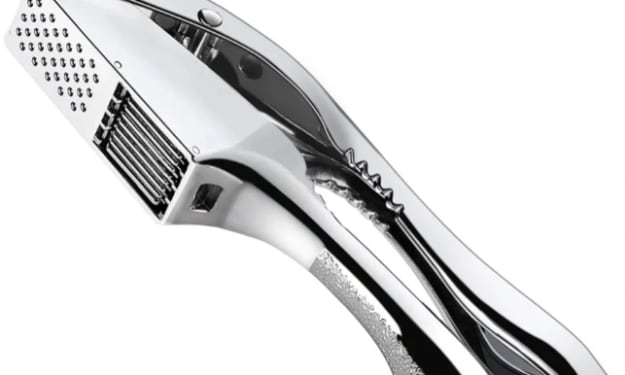The Art of Square Format Photography
How Square Format Photography Can Transform Your Work

Square format photography offers a unique canvas for photographers to explore composition in a fresh and innovative way. With its symmetrical dimensions and balanced frame, the square format presents a captivating challenge that can elevate your photography skills to new heights. In this piece, we will delve into the world of square format photography, discussing how this format can enhance your compositions, spark creativity, and transform your photographic work. Whether you are a seasoned photographer looking to expand your portfolio or a beginner eager to experiment with a new perspective, embracing the square format can open up a world of artistic possibilities. Get ready to unlock the potential of this distinctive format and watch your photography skills flourish.
Embracing the Square Format
The Charm of Square Photos
Square photos possess a distinctive charm that sets them apart from the more common rectangular formats. The symmetrical nature of the square frame naturally draws the viewer's eye toward the center, creating a focal point that can make your subject stand out. This balance is ideal for portraits, still life, and architectural shots, offering a sense of harmony and stability. Additionally, the square format encourages photographers to think differently about their compositions, often leading to more creative and thoughtful framing. Without the horizontal or vertical bias of rectangular formats, you have the freedom to explore new angles and perspectives. The simplicity and elegance of square photos can make even the most mundane subjects appear intriguing and visually appealing. Embracing the square format can truly transform your approach to photography, providing a fresh and exciting way to see the world through your lens.
Composition Challenges and Rewards
Working with a square format presents unique composition challenges that can ultimately be very rewarding. Unlike traditional rectangular formats, the square frame requires you to reconsider how you position your subjects and balance elements within the scene. This can initially feel restrictive but often leads to more deliberate and thoughtful compositions. The challenge lies in utilizing the symmetrical space effectively, ensuring that every part of the frame contributes to the overall image. However, overcoming these challenges can sharpen your skills and foster a deeper understanding of visual balance and harmony. The rewards are evident in the final images, which often possess a compelling sense of order and focus. By pushing yourself to master the square format, you can develop a more refined eye for detail and composition, making your work stand out. The effort you invest in navigating these challenges will pay off in the form of striking, well-composed photographs.
Mastering Composition Techniques
Balancing Elements in a Square
Balancing elements in a square frame requires a different approach compared to rectangular formats. The symmetrical nature of the square means that the traditional rule of thirds can be adapted but often needs to be reconsidered. Centering your subject can be very effective, creating a strong focal point and a sense of stability. However, asymmetrical compositions can also work well, as long as the visual weight is evenly distributed. Pay close attention to negative space, as it plays a crucial role in maintaining balance within the square frame. Elements that are too close to the edges can make the composition feel cramped, so allowing subjects to breathe is essential. Additionally, using leading lines and diagonal elements can help to guide the viewer's eye through the image, creating a dynamic and engaging composition. Mastering the art of balancing elements in a square frame can elevate your photography, making each shot more impactful and visually appealing.
The Rule of Thirds Reimagined
In square format photography, the traditional rule of thirds takes on a new dimension. While the foundational idea remains the same—dividing the frame into nine equal parts and placing key elements along these lines—the square format encourages a fresh interpretation. With equal width and height, the intersections of the grid lines are closer to the center, making central compositions more appealing. This format allows for greater flexibility in positioning your subjects. You can place them off-center for a dynamic composition or centered for symmetry and balance. Additionally, consider using diagonal lines to create visual interest, drawing the viewer's eye through the image. Reimagining the rule of thirds for a square frame challenges you to think creatively about spacing and alignment. Embracing this approach can lead to more compelling and innovative photographs that capture attention and tell a stronger visual story.
Square Format in the Digital Age
Analog Charm in Digital Photography
In the digital age, the square format brings the nostalgic charm of analog photography into contemporary practice. Many digital photographers are drawn to the square format for its vintage appeal, reminiscent of classic film cameras like the Hasselblad or Rolleiflex. This format encourages a slower, more deliberate approach to photography, similar to the careful consideration required when shooting with film. Emulating the analog aesthetic in digital photography can be achieved through various means, such as using vintage filters, experimenting with grain and texture, or simply adopting the compositional mindset of film photographers. The square format also stands out on digital platforms, providing a distinct look that can differentiate your work in a sea of rectangular images. By blending the timeless appeal of analog techniques with modern digital tools, you can create photographs that resonate with both nostalgic charm and contemporary creativity, offering a unique visual experience to your audience.
Advancing Skills with a Square Perspective
Adopting a square perspective can significantly advance your photography skills. This format compels you to think more critically about composition, leading to a deeper understanding of balance, symmetry, and negative space. Unlike rectangular frames, the square format often requires a more thoughtful approach to subject placement and framing. This challenge can help you develop a keener eye for detail and improve your ability to create visually compelling images. Additionally, working within the constraints of a square frame can spark creativity, encouraging you to experiment with new angles, perspectives, and techniques. As you become more comfortable with this format, you'll find that your overall compositional skills improve, benefiting your work across all types of photography. Embracing the square perspective not only adds variety to your portfolio but also enhances your ability to see and capture the world in innovative ways, ultimately making you a more versatile and skilled photographer.
About the Creator
Enjoyed the story? Support the Creator.
Subscribe for free to receive all their stories in your feed. You could also pledge your support or give them a one-off tip, letting them know you appreciate their work.






Comments (1)
It’s a great tip for learners. Thank you . 🙌 . Keep sharing what you learn and experiment. 👌❤️